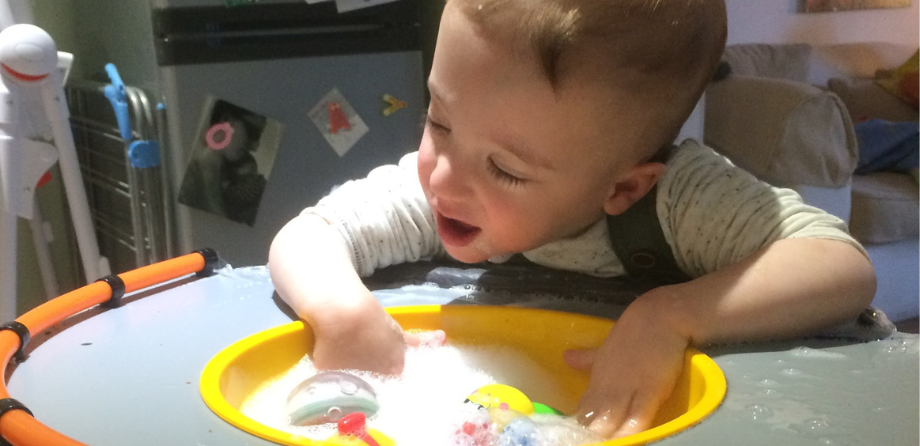
How nurseries can support children with cerebral palsy
NDNA spoke to Founder and Director of Policy of Action Cerebral Palsy, Amanda Richardson MBE, for advice on how nurseries can support children with cerebral palsy.
Action Cerebral Palsy is the only UK charity which actively and solely campaigns on behalf of children with cerebral palsy, filling the gap left by other campaigning organisations. Its work is inspired and driven by children with cerebral palsy and their families who face the many challenges of their day-to-day life with courage and resilience.
What is cerebral palsy, and how does it affect individuals?
Cerebral Palsy is a lifelong and fluctuating neurological condition which is the most common cause of physical disability in childhood. The condition primarily affects muscle tone, movement, balance, co-ordination and posture and is caused by abnormal development or damage to the brain and/or central nervous system before, during or soon after birth. In addition to motor skills – large movements, e.g. walking and standing (gross) and small (fine) movements of the arms and hands and mobility, the condition has a wider impact on normal childhood development and can affect sensory processing, speech and communication, cognition, health and self-care all of which may have a severe impact on the child’s future independence, learning and quality of life. The impact on a child can range from mild to profound and complex.
Are there different types of cerebral palsy, and how do they manifest?
There are four main types of cerebral palsy:
- Spasticity: high tone (stiffness) with tense muscles. This is the most common type of cerebral palsy.
- Dyskinetic: sometimes referred to as dystonia, athetosis or chorea. This is characterised by fluctuating tone creating constantly changing involuntary movements which are difficult to control.
- Ataxic: poor sense of balance, often with a wide gait and overly swaying motion and can result in falls and stumbles
- Mixed: Sometimes there may be a mixture of these presentations.
For further information about cerebral palsy, see NHS’ page on Cerebral palsy
What are the key signs to look for in young children and at what age or stage of development?
While every child develops in different ways and at different rates, it is important to recognise the key warning signs:
- If a child is not meeting their normal motor developmental milestones for their age/stage, and particularly if they are not sitting by 8 months and not walking by 18 months (ages to be adjusted for babies born prematurely)
- If a child feels floppy, stiff or a combination of both
- If a child is not kicking their legs or moving their arms and legs up when lying down
- If a child is not able to bring their hands together
- If a child is not using one side of their body as much as the other
- If a child is distressed by or not reacting to movement, touch, sound or smell
- If a child is not making eye contact or following movements with their head and eyes
- If a child has difficulty feeding or swallowing.
Action Cerebral Palsy has recently launched a public awareness campaign about the early warning signs called If In Doubt, Check It Out and their materials have more detailed information about typical and atypical motor development at each age and stage along with freely downloadable posters and parent information leaflets on their website. See more information on the Action Cerebral Palsy website.
How should early years professionals who suspect a child may have the condition broach the subject with parents/carers?
If you do notice a child displaying any of these warning signs, please encourage their parents or carers to seek professional advice from either their Health Visitor or GP and ensure that any referral is followed up. DO NOT imply or suggest yourself that the child may have cerebral palsy because there may be other reasons why the child is showing these signs, or it may be nothing at all. But it’s important for that child to be seen by an expert healthcare professional so that they can be assessed.
It may be helpful for parents to have a copy of the If In Doubt, Check It Out parent information leaflet (which can be downloaded for free from Action Cerebral Palsy) to take with them to the appointment and any video footage of their child’s movements which are causing concern so that they can refer to this at the appointment. If a child does have cerebral palsy or another condition, it is vital that the child is assessed and diagnosed as soon as possible so that they and their parents can receive the intervention, additional support and care that they need at a point in their life when it can have the most impact on that child’s lifelong prospects. It is important to remember that any appropriate intervention and treatment for abnormal movements and posture by qualified professionals can and should start before a formal diagnosis which can take some months to attain.
Are there specific resources or strategies for inclusive education to support early years professionals?
Firstly, seek out any locally available expertise which may come from:
- A specialist early years teacher for the physically impaired employed by the local authority. (See or contact PDNET)
- Portage
- The local paediatric children’s therapy team (occupational therapist, physiotherapist and speech and language therapist who may be able to advise on adaptations to the environment to promote inclusive play and exploration)
- Any specialist charities or Centres which provide interventions for children with cerebral palsy. Some may be able to provide “outreach” visits to provide advice and support for nursery staff. For example, Conductive Education Centres and Bobath. Ensure that any professionals involved are suitably qualified and registered with their professional bodies.
NDNA has a number of good resources on movement and physical development. The key to inclusive strategies for children with motor delay is to ensure that the child’s posture is correctly supported in any activity whether this is in sitting, moving on the floor or moving around the classroom or playground. If the child is able to stabilise and support their trunk (middle section of the body), and maintain a symmetrical position as much as possible, they will feel more secure and able to use their arms and hands for play and exploration. This may require:
- Grab rails available on table tops and around the classroom, toilet areas etc.
- Foot boxes or “rises” to ensure that the child can put their feet flat to help stabilise their sitting position in midline, i.e. without leaning to one side.
- Floor seating which supports the back.
The other key area for support is speech and language development and it is vital that strategies for a child with speech production or language challenges or delay to have communication strategies put in place as soon as possible. Advice can be sought from the above agencies on what AAC (Alternative and Augmentative Communication Strategies) could be used to enable the child to fully participate in classroom activities.
Would you find resources to help you to support motor development and to support children with motor delay of help to you in your setting? If so, would you be able to spend 5 minutes completing a survey for Action Cerebral Palsy and NDNA.
What support is available for the emotional and social well-being of individuals with cerebral palsy and their families?
It is important to know that however worried a parent/parents/carers might be, they are not alone and there is help available at every stage. Please do encourage parents and carers to speak with their healthcare professionals who know them and the child and can signpost them to local services. There are also many online forums and websites which can give parents and carers information and support. Here are some other specialist websites and services to signpost parents to:
- Action Cerebral Palsy | For Parents
- There are a number of charities offering free or subsidised specialist early intervention services. No formal diagnosis or doctor’s referral is required to access these services. See if there is a service local to you here and The Bobath Centre who will be happy to answer any questions parents may have
- Also, parent groups, special needs play groups or online chat lines or groups, including the Parents Connect service provided by the national charity, Scope can be a great source of support
- National Portage Association provides home visits by trained practitioners to support early development for pre-school children with additional needs and their families
- Please make parents and carers aware of your local council’s “Local Offer” which has details of local organisations which offer help and support for children with additional needs and their families.
- Scope provides practical information and support
- IPSEA offers free and independent legally based information, advice and support to help get the right education for children and young people with all kinds of special educational needs and disabilities (SEND).
How can a setting best support the child once they have a diagnosis in place?
A vital source of advice on how to best support any child with motor delay or challenges is to consult with their parents who will be the true experts on their child’s needs and how best to support them. Parents should always be equal partners in planning and providing for the best support for their child in a nursery setting. The best way to ensure that the child and the setting is properly supported is to seek assessment for an education, health and care plan. This process can take a long time, but it should provide a plan for the child to ensure that their therapy and equipment needs are in place. A nursery may be requested to provide information about the child and their needs to include in the plan.
Once a child has a diagnosis, and depending upon their needs and whether an education, health and care plan is in place, they will be offered NHS therapies such as physio, occupational, and speech and language. Speak with the parent or carer to find out what therapies the child is accessing and what activities they are doing and the therapy goals. You may be visited by the child’s therapy team who may train a member of staff to carry out exercises with the child and who may assess the child for specialist seating etc.
The child with cerebral palsy may have difficulty in receiving, processing and regulating visual, auditory and tactile information and so special preparation for the child and adaptations may be needed to enhance or adapt their access to toys, books, and experiential play. A specialist teacher or paediatric occupational therapist can advise on these strategies.
Also don’t forget to always have AAC strategies and materials available for the child who requires them to communicate.
There may be activities or exercises that you can also do with the child in your setting to encourage motor development. Toys are frequently used during activities with very young children to stimulate a good range of movement, play and curiosity, but also to achieve specific health targets. Research has shown that encouraging toddlers with delayed motor development to reach and grasp for toys is an effective way to improve grasp and release, stability, balance, mobility and fine motor skills during seated everyday tasks like eating and bathing. (See above).
Once a child has a diagnosis, and depending upon whether an education, health and care plan is in place, they will be offered NHS therapies such as physio, occupational, and speech and language. Speak with the parent or carer to find out what the child is accessing, what activities they are doing and the therapy goals. You may be able to contact the child’s therapy team who could train a member of staff in supporting the child within your setting and providing activities and exercises to reinforce the work that they are already doing.
Action Cerebral Palsy is calling on the next government to commit to policy change to achieve better outcomes for all children with cerebral palsy and their families in the UK.
Read the Action Cerebral Palsy 2024 Manifesto and Explanatory Notes here.
Similar Articles
Family voices, stronger nurseries: Tips for parent surveys

Summer sensory exploration: What’s in the box?


